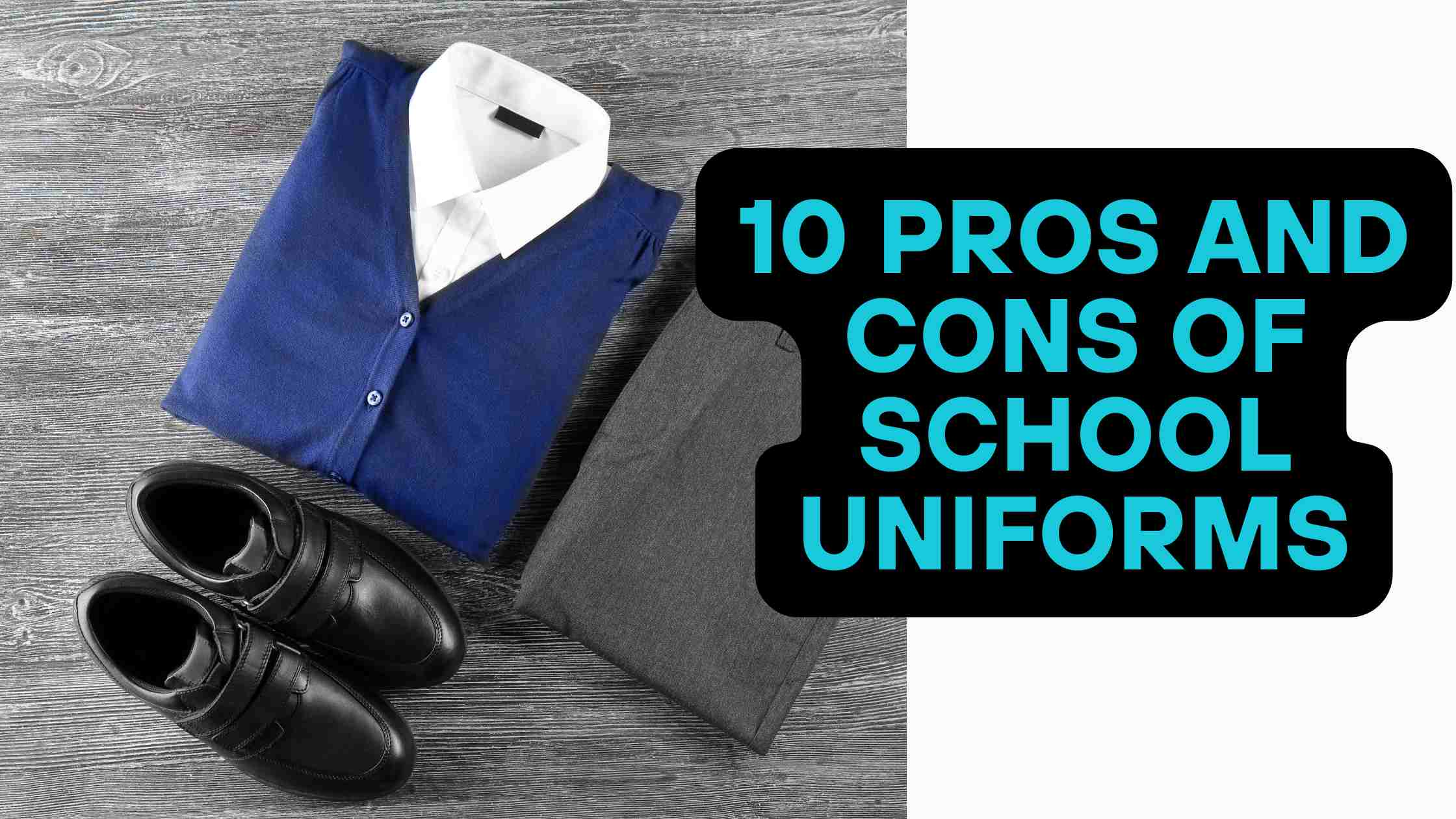
10 Pros and Cons of School Uniforms
Do school uniforms create unity or suppress individuality?
That’s the question many parents, educators, and students find themselves asking year after year. I’ve seen it from both sides—first as a student who wore uniforms for most of my school life, and now as someone who works with students who feel very strongly about their right to self-expression.
At first glance, school uniforms seem simple: a way to make everyone equal and avoid distractions. But dig a little deeper, and you’ll find a mix of strong opinions and emotional arguments on both sides.
- You can read our articles on reasons students shouldn’t wear uniforms in school or reasons school uniforms are good
*“Uniforms level the playing field,” some say.
“Uniforms kill creativity,” others argue.
So, what’s the real story? Are school uniforms helping students focus, or are they holding them back? Are they promoting discipline, or just enforcing conformity?
In this article, we’ll explore 10 pros and cons of school uniforms—backed by real experiences, social dynamics, and educational outcomes. By the end, you’ll have a balanced view and maybe even change how you feel about school dress codes.
Let’s dive into both sides of this ongoing debate.
5 Reasons Why School Uniforms Are a Good Idea
1. Promotes Equality Among Students
Uniforms create a sense of sameness and fairness. When everyone wears the same clothes, it reduces visible economic and social differences.
No expensive sneakers or trendy jackets to separate “haves” from “have-nots.”
2. Reduces Peer Pressure and Bullying
Believe it or not, many cases of bullying start with fashion judgments. School uniforms cut down on clothing-based bullying, making school a safer place for many students.
3. Improves Focus in the Classroom
With uniforms, students worry less about what they’re wearing and more about learning and class participation. Uniforms can eliminate distractions.
4. Saves Time and Money
Parents love uniforms for a reason—they simplify morning routines and reduce spending on everyday fashion. There’s no stress about what to wear each day.
5. Instills a Sense of Discipline and Belonging
Wearing a uniform can give students a sense of pride and identity. It signals that school is a serious, respectful place. For some, it encourages better behavior.
5 Reasons Why School Uniforms Might Not Be a Good Idea
1. Limits Self-Expression
Teenagers especially want to express who they are through what they wear. Uniforms can suppress individuality and creativity during a critical time in identity development.
2. Doesn’t Eliminate All Social Pressures
Even with uniforms, students find ways to show status—shoes, backpacks, gadgets. Uniforms may reduce some pressure, but not all.
3. Can Be Uncomfortable or Impractical
Let’s be honest: some school uniforms just aren’t comfortable. Scratchy materials, poor fit, or outdated styles can affect a student’s comfort and confidence.
4. May Not Improve Academic Outcomes
There’s little solid evidence that uniforms actually boost academic performance. The results are mixed, and many other factors play a bigger role.
5. Can Be Financially Burdensome for Some Families
Ironically, while uniforms can reduce clothing costs, buying specific uniform pieces from designated stores can be more expensive for low-income families than regular clothes.
📋 Comparison Table: Pros and Cons of School Uniforms
| Pros of School Uniforms | Cons of School Uniforms |
|---|---|
| Promotes equality and reduces visible differences | Suppresses personal expression and creativity |
| Reduces bullying based on clothing | Doesn’t remove all social status symbols |
| Helps students focus on academics | Often uncomfortable or not student-friendly |
| Saves time and money on daily outfits | Can be expensive if schools require specific items |
| Builds discipline and sense of unity | No proven link to better academic performance |
Should Schools Require Uniforms?
So—are school uniforms helpful or harmful? The answer depends on what you value most.
If your priority is equality, discipline, and simplicity, then school uniforms probably make a lot of sense. They reduce distractions, flatten economic differences, and help kids focus more on school than style.
But if you care deeply about personal freedom and expression, the drawbacks become clearer. Uniforms can make students feel boxed in, and not every child thrives in an environment that doesn’t allow them to showcase who they are.
From my own experience, uniforms made my mornings easier. I didn’t worry about whether my outfit was “cool” or acceptable. But I also remember wishing I could wear clothes that reflected who I was. It’s a trade-off—structure versus freedom.
So what’s the takeaway here?
School uniforms have their strengths. But they’re not a cure-all. They solve some problems while creating others. In the end, a school’s culture, leadership, and values play a bigger role in student success than any dress code.
What matters most—what students wear? Or how they’re taught and treated?
Cite this article
You can copy and paste your preferred citation format below.
Martin, L. & Arquette, E.. (2025, May 9). 10 Pros and Cons of School Uniforms. Coursepivot.com. https://coursepivot.com/blog/10-pros-and-cons-of-school-uniforms/



